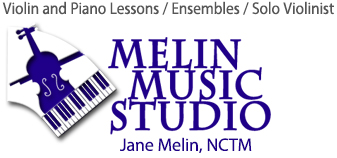I think I have a unique perspective on teaching piano to beginners, because I taught myself to play as a child. (The fancy word for this is, I am an “autodidact.”) At age 9 I had already learned to read violin music in treble clef, so I used a keyboard and a book of familiar children’s songs to teach myself the bass clef and how to play several notes at a time. After a couple years of playing any piano music I could get my hands on, like the Suzuki Piano books, my parents let me take some lessons with a neighbor who was a piano teacher. This was in addition to my violin lessons, so it was a special treat. I had learned enough on my own that she put me right into intermediate piano music like Bach’s Inventions and easy Chopin. I also enjoyed learning and playing Scott Joplin rags, Moonlight Sonata, “Music Box Dancer” (remember that one?) and more. My teenage daughter, also first a violinist, loves the piano music of Ludovico Einaudi and was motivated to teach herself to play his I Giorni from sheet music. Yes, that was her first piano piece, and she has learned scores of others without a single piano lesson. So I truly believe that most piano students, with a little determination and curiosity, can quickly learn the basics and soon be playing music that they really enjoy. Prior experience reading music will of course help a student start much more quickly.
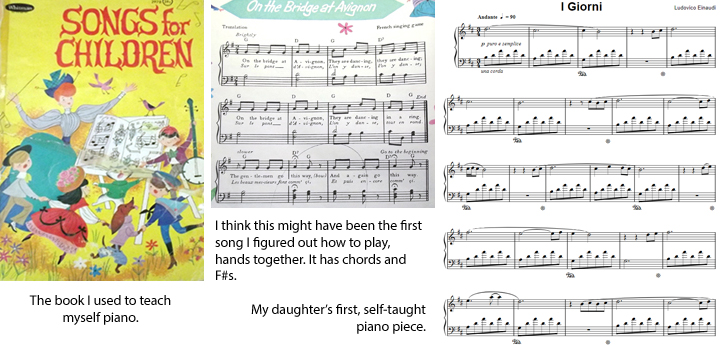 The challenge is to find piano teaching materials that move at the pace that I think students are capable of. I am used to the demanding pace of traditional violin method books, which introduce concepts like key signatures, various articulations, and rhythm patterns with eighth notes quite early on. I was surprised to find that most piano methods don’t even place notes on the grand staff at first, and take a long time to introduce notes besides those in the key of C. Eighth notes don’t show up for a couple “years” in the method book progression. And self-accompaniment through simple chord progressions is also several years away.
The challenge is to find piano teaching materials that move at the pace that I think students are capable of. I am used to the demanding pace of traditional violin method books, which introduce concepts like key signatures, various articulations, and rhythm patterns with eighth notes quite early on. I was surprised to find that most piano methods don’t even place notes on the grand staff at first, and take a long time to introduce notes besides those in the key of C. Eighth notes don’t show up for a couple “years” in the method book progression. And self-accompaniment through simple chord progressions is also several years away.
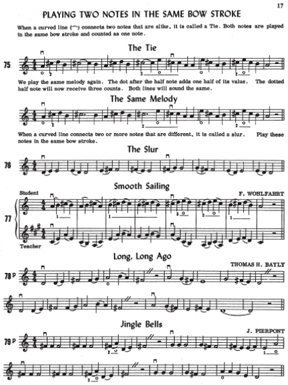
Another way that piano and violin methods are different is the dizzying array of piano book series available. The most popular series are full of colorful pictures and dictate 3 or 4 books at each level: typically Lesson, Technique, Theory and Performance. Piano students are expected to juggle the books, and teachers to flip through them at each lesson to find the correlating assignment pages. Violin students are lucky if they have both a Lesson book and a Performance book. (Mine do!) Suzuki violin students only have one book at first which is supposed to serve all purposes. And none of the standard violin method books contain non-functional pictures of any kind.
The piano is an all-in-one music-making machine–this is great for piano students! It can produce melody and harmony at the same time. The notes to be played are laid out right there — in black and white — for fingers to simply press down to hear a musically pleasing sound. Beginning violin students must struggle with non-intuitive physical movements to locate single notes on the fingerboard and play them in tune, with decent tone. Because piano is relatively accessible to get started on and very popular for beginners, there are many computer apps to help students on their musical journey. What a gift to the motivated piano student, who can use these tools to quickly learn music-reading and mapping the keyboard.
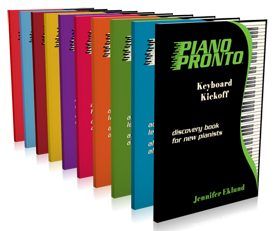 What the self-directed piano student may lack is a coach who can help them with the finer points of playing this instrument, like articulations, phrasing, pedaling, and musical expression. That is where I can come alongside. After using several multi-book beginner piano methods for the past ten years, I have switched to Piano Pronto for most of my students. Its approach matches how I prefer to teach violin students: emphasizing functional music-reading skills from the beginning, using an (almost) all-in-one method book and a fun variety of music, including classic tunes that have stood the test of time. Most important is an underlying conviction that students can integrate lots of new information quickly, when it is presented in a compelling way.
What the self-directed piano student may lack is a coach who can help them with the finer points of playing this instrument, like articulations, phrasing, pedaling, and musical expression. That is where I can come alongside. After using several multi-book beginner piano methods for the past ten years, I have switched to Piano Pronto for most of my students. Its approach matches how I prefer to teach violin students: emphasizing functional music-reading skills from the beginning, using an (almost) all-in-one method book and a fun variety of music, including classic tunes that have stood the test of time. Most important is an underlying conviction that students can integrate lots of new information quickly, when it is presented in a compelling way.
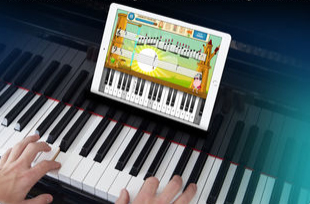 Today’s students like to learn through technology and games. So I engage with them through carefully selected teaching apps. All piano students will need to have a home iPad on which they can use apps for practicing. My #1 app is Piano Maestro, which is supplied to students via a studio-wide annual subscription. All the music in the Piano Pronto method books is included in Piano Maestro, so students can have instant feedback on their practice accuracy.
Today’s students like to learn through technology and games. So I engage with them through carefully selected teaching apps. All piano students will need to have a home iPad on which they can use apps for practicing. My #1 app is Piano Maestro, which is supplied to students via a studio-wide annual subscription. All the music in the Piano Pronto method books is included in Piano Maestro, so students can have instant feedback on their practice accuracy.
I will not retain piano students past the point at which I am able to teach them the next level of music. But I will prepare them to move on to a more advanced teacher if they wish to continue lessons. And if they don’t, I want my teaching to have given them the knowledge and confidence to learn new piano music on their own. They will read music well enough to have a head start learning another instrument, perhaps in a school band or orchestra, or even to sing in a choir. They now have “music as a second language.” And that is all any music teacher could ask.
